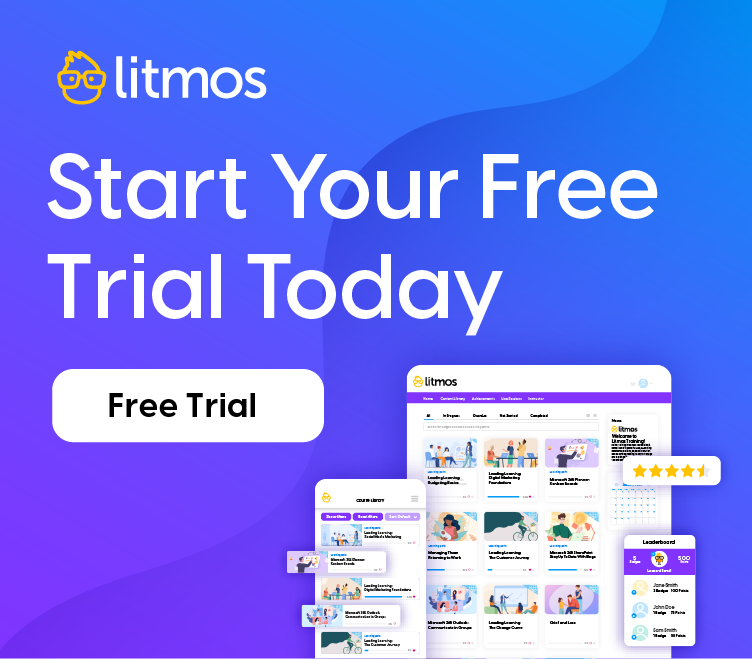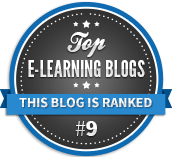Closing the Gap: Strategies for Effective Corporate Skill-Building with AI
Key Takeaways:
|
The corporate learning landscape is experiencing a shift. Organizations are navigating digitally-driven transformation and evolving market dynamics, and a critical disconnect has emerged between employee confidence and organizational readiness for AI. While workers express optimism about their ability to adapt, employers face mounting concerns about skill gaps that threaten to undermine competitive advantage. Brandon Hall Group™ State of Talent Management 2025 research reveals that while most organizations see their workforce as ready to face today’s challenges (68% highly prepared), they are far less confident in the readiness for the needs of the future (75% not prepared).
The solution lies in embracing skills-based learning approaches powered by AI technology—a transformation that promises to revolutionize how organizations develop, deploy, and retain talent.
The Growing AI Skills Gap: A Tale of Two Perspectives
The impact of generative AI on organizational functions is becoming increasingly clear. Brandon Hall Group™ and Litmos research reveals that 89% of organizations anticipate GenAI will have a moderate to high impact on Learning & Development, while 81% expect similar effects on Talent Acquisition, and 69% on Talent Management. These aren’t distant predictions—they reflect the immediate reality facing organizations today.
According to Brandon Hall Group’s 2025 State of Learning research, organizations are already taking action, though adoption remains uneven. Currently, 39% of organizations are using AI for personalized learning recommendations, while 38% leverage AI for content generation. Perhaps most tellingly, 53% of organizations currently use Learning Experience Platforms, with another 37% planning implementation within 12 months—a clear signal that the infrastructure for AI-enabled learning is rapidly expanding.
The challenge extends beyond technology adoption. Brandon Hall Group’s talent management research further identifies that 45% of organizations struggle with having defined skills and competencies for each role—the foundational element needed for effective skills-based learning. Additionally, 35% report that skills and competencies are not tied to individual development plans, creating a disconnect between organizational needs and employee growth paths. (To leverage research data like this, consider Brandon Hall Group’s Institute membership.)
Why Pivot to Skills-Based Learning?
The business case for skills-based learning is overwhelming, driven by a near-universal recognition that traditional role-based development models are insufficient for today’s dynamic business environment. The benefits of embracing a skills-based approach extend far beyond improved training outcomes. According to research cited in Litmos’s analysis, skills-based organizations are 79% more likely to provide a positive workforce experience and 63% more likely to achieve their business results. These aren’t marginal improvements—they represent transformational changes in organizational capability and performance.
A skills-based approach fundamentally reshapes the employee experience in several critical ways:
- Building Resilience Through Adaptability: When employees aren’t defined solely by their job titles, they develop a more well-rounded, resilient skill set. This approach opens opportunities to build capabilities not traditionally associated with their roles, creating a workforce better equipped to handle unexpected challenges and changing market conditions.
- Breaking Down Organizational Silos: Skills-based learning naturally promotes cross-functional skill-building opportunities, breaking down departmental barriers and improving institutional knowledge sharing. This becomes especially critical in global and remote-first workplaces where organic knowledge transfer is more challenging.
- Enhancing Employee Engagement: By deploying people based on their skills and capabilities rather than rigid role definitions, organizations can better match workers with tasks that align with their interests and strengths. This alignment drives higher engagement and job satisfaction—crucial factors in retention and performance.
- Revolutionizing Talent Acquisition: Skills-based organizations can adopt more agile and targeted talent acquisition strategies. Rather than hiring for every required skillset, HR and L&D teams can strategically develop internal talent for specific capabilities, reducing recruitment costs while providing valuable career development opportunities for existing employees.
|
Skills-Forward Leadership is reshaping how organizations build competitive advantage through their workforce. Join us at Human Capital Management Excellence26® to discover how AI and data analytics are transforming learning, talent development, and HR operations while exploring strategies for developing leaders who can navigate technological disruption. Litmos is a proud sponsor of the Excellence 26® conference. |
How AI Learning Management Systems Can Help
The convergence of AI technology and learning management systems represents a pivotal opportunity to address the skills gap at scale. Modern AI-powered learning management systems offer capabilities that were unimaginable just a few years ago, fundamentally changing how organizations approach workforce development.
AI learning management systems excel at personalizing the learning experience. By analyzing individual learning patterns, job requirements, and career aspirations, these systems can create customized learning pathways that maximize both engagement and effectiveness. They can identify skill gaps in real-time, recommend relevant content, and adjust difficulty levels based on learner progress—creating an adaptive learning environment that meets each employee where they are.
Beyond personalization, AI systems dramatically accelerate content creation and curation. Brandon Hall Group’s research shows that organizations are increasingly leveraging these capabilities, with many reporting significant time savings in developing learning materials. AI can rapidly generate role-specific training content, update materials to reflect changing requirements, and ensure consistency across global learning initiatives.
|
Learn how to use AI strategically for instructional design. Read the latest Litmos article, ‘AI Workslop’ vs. Human Touch: How to Maintain Quality in AI-Generated Training to gain actionable insights for human-AI collaboration in L&D. |
The integration capabilities of modern AI learning management systems also address one of the primary challenges identified in Brandon Hall Group’s research: the inability to leverage experience and expertise across the organization. AI systems can capture and disseminate institutional knowledge, connecting employees with internal experts and creating collaborative learning communities that transcend traditional organizational boundaries.
Perhaps most importantly, AI-powered systems provide the necessary analytics and insights to demonstrate learning’s impact on business outcomes. They can track skill application in real-world scenarios, measure performance improvements, and directly connect learning initiatives to business KPIs and transforming L&D from a cost center to a strategic value driver.
The Path Forward
The evidence is clear: organizations that embrace skills-based learning powered by AI technology position themselves for success in an increasingly dynamic business environment. The combination of employee enthusiasm for skill development and the transformative potential of AI creates an unprecedented opportunity to close the skills gap and drive organizational performance.
However, success requires more than technology implementation. Organizations must commit to defining clear skill and decision-making frameworks for AI learning, aligning development plans with business outcomes, and creating cultures that value continuous learning and adaptation. The organizations that master this transformation won’t just survive the AI revolution—they’ll lead it.
As you consider your organization’s approach to skill development and AI adoption, remember that the journey toward a skills-based organization is iterative and ongoing. Start by assessing your current state, identifying priority skill areas, and building the infrastructure to support continuous learning and development.
|
Ready to transform your organization’s approach to learning and development? Download the latest Litmos guide on building an L&D blueprint to navigate organizational change and take the first step toward building a skills-based organization that thrives in the age of AI. |




